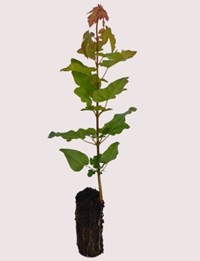
PLANTING FOR CHRISTMAS TREES
Cheviot Trees are specialist growers of Christmas tree plants.
Cheviot Trees have seen an increase in the demand of species used for Christmas tree production. The Cell Grown plants flexibility in planting time has enabled Christmas tree growers to plant when it suits them.
QUALITY
Our quality of stock grown is second to none with constant repeat orders somewhat dictating the species we grow and the volumes in which we grow them. The fact that certain species used for the production of Christmas Trees often run low is more evidence to suggest that the Cell Grown plant is by some growers the preferred method of production. The superb quality we have been able to offer in recent years, have, we are sure also contributed to the current shortfall on the open market.
SPECIES SELECTION
We produce many species suitable for Christmas tree production including Fraser fir, Norway spruce, Blue spruce and noble fir, however our most popular species is Nordman Fir due to its excellent needle retention qualities when cut and highly desirable shape and colour.
Abies nordmanniana (Nordman Fir)
- Non drop, slow growing (expensive) type of tree.
- Need around 7 years on planting site to make a 6 foot tree.
Picea abies (Norway Spruce)
- More likely to drop needles, but grow a bit quicker so are cheaper. Traditional.
- Need around 5 years on planting site to make a 6 foot tree.
Abies fraserii (Fraser Fir)
- Non drop, a bit quicker growing than Abies nordmanniana.
- Need 5-6 years on planting site to make a 6 foot tree.
PLANTING CHRISTMAS TREE PLANTS
The trees are usually planted in straight rows, with 1.2m spacing between the rows and 1.2m spacing between trees. The lines are usually offset to allow each tree maximum space.
It is most common to plant directly into the ground without any ploughing or turning soil over. Some weed control is usually necessary (Spraying).
The field can be replanted year by year as the trees are cut, by putting a tree in between the two previous stumps. However it may be preferred to let the field become empty so more weed control can be done before replanting the whole area.
FERTILISING CHRISTMAS TREE PLANTS
Trees can be fertilised using conventional fertiliser applied to the surface of the ground and taken up by the roots of the trees. Our fertiliser is a controlled release formulation, meaning it releases slowly over at least a year. The brief analysis is 11:22:9. This means 11% Nitrogen, 22% Phosphorus, 9% Potassium.
This could be applied once a year to Christmas trees. We advise 10g per tree at planting, but older Christmas trees could have up to 50g per tree. It can be applied by hand, using a team of staff walking one row of trees each, with a bucket of fertiliser and a measured scoop. The roots of a tree generally reach the same area as the foliage covers. If the trees are large enough to need pruning or large enough to meet, the fertiliser can be dropped straight downwards where the staff are walking and it will be available to the roots. Smaller trees will require it directing under the foliage as far as possible.


























